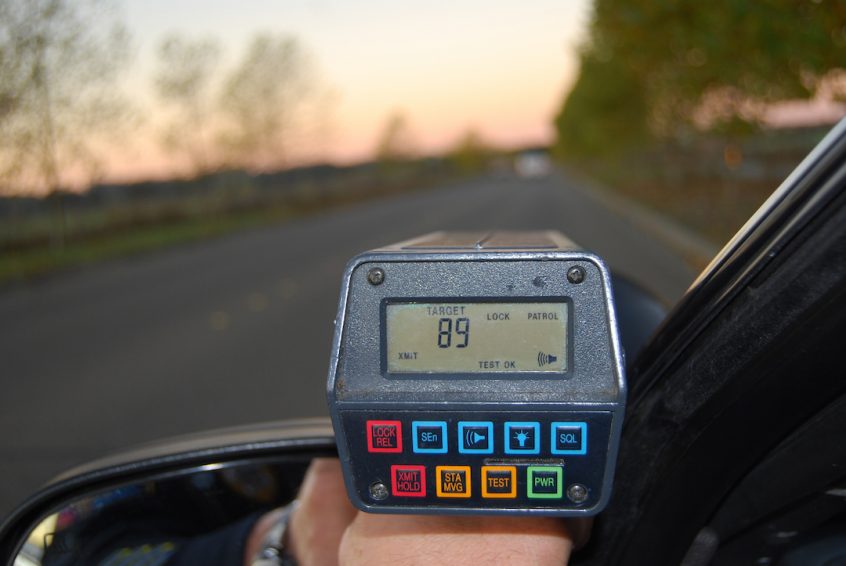Speeding may be fun, especially on those days when you are the only car on the road. And the song is just right. But these posted limits aren’t arbitrary numbers designed to restrict your autonomy. Speed limits are heavily researched controls meant to reduce road fatalities and accommodate for road conditions. Ignoring them not only negatively affects your ability to operate a vehicle safely, but can cost you money in other areas as well.
Determining Speed Limits
Realistic speed limits are a traffic-engineering tool used to derive the best traffic service for a given set of roadway conditions. The best document to describe why is “Establishing Speed Limits: A Case of ‘Majority Rule,'” published by the Arizona Department of Transportation
.
Generally, the first factor taken under consideration is the 85th percentile speed. This is the speed that 85 out of 100 drivers choose on their own, as measured by special traffic counters. Additional considerations must be made for traffic volume, accident history in the particular location, number of lanes and other road conditions, such as the presence of hills and curves.
Price Tag One: The Speeding Ticket
The first thing many people think of when they decide to drive faster than the posted limit is the possibility that they may be caught and receive a ticket. It’s understandable that this harbinger of financial doom is what looms largest in most speeders’ minds, because tickets are expensive. According to Gordon Fox, President of 2Pass Defensive Driving School, the average cost of a photo speeding ticket in Arizona’s largest cities, including court fees, is about $300. The faster you’re driving and the lower the speed limit of the area you’re speeding in, the more your ticket can be.
Price Tag Two: Insurance Premiums
Speeding is a moving violation, and moving violations are not looked upon kindly by insurers. After receiving a speeding ticket, even if it’s just one, insurance companies can raise your rates for as long as three years. Depending on the severity of your violation, you could be looking at a 10% to 25% increase.
Price Tag Three: Paid at the Pump
While it may be a pleasure on the autobahn, speeding in the U.S. doesn’t generally mean setting your foot down hard on the gas and keeping it there without interruption until you reach your destination. Instead, speeding generally means rapidly accelerating, breaking in order to avoid hitting other vehicles or running red lights and then re-accelerating once the opportunity presents itself again.
According to the Department of Energy, this kind of driving can lower your vehicle’s gas mileage by as much as 33% on the highway and 5% in town, which means more trips to the gas station. The actual compromise in gasoline that you experience will depend on your vehicle, but Department of Energy studies show that most drivers can expect to pay an extra 19 cents to $1.26 per gallon when speeding.
Price Tag Four: Pollution
Studies have shown that driving at slower speed limits lowers emissions. Unless it’s a Volkswagen Clean Diesel. If you’re concerned about the environment, however, then there’s even more you need to do to change your car’s footprint. In 2009, Virginia Tech researchers found that there were some traffic calming measures that actually increase fuel consumption and emissions. These included stop signs and speed bumps. The reason these were environmentally worse than enforcing a static low speed limit or introducing traffic circles was that bumps and stop signs increase the likelihood that a driver will accelerate aggressively.
Price Tag Five: Health, Life and Property
If there’s one thing that trumps every other cost of speeding it’s the impact that speeding can have on an innocent person’s life, health and property. It’s one thing for a driver to disobey posted driving regulations and harm him or herself; it’s another thing when that decision to speed hurts another driver or passenger.
According to the National Highway Traffic Safety Administration, speeding has been found to be one of the highest contributing factors in traffic crashes. The NHTSA’s 2008 Traffic Safety Facts report estimates the cost of speeding-related crashes to be $40.4 billion per year. It also states that 31% of all fatal crashes in 2008 were caused in part by speeding.
In addition to the potential fatalities that result from speeding, one should also consider that an accident related injury becomes a pre-existing condition in the eyes of a health insurance company and can mean that an individual faces much higher health insurance premiums. In addition, property damage and bodily injury liability claims to the speeder’s insurance company will result in higher premiums, the payment of a deductible and could impact future insurability.
The Bottom Line
Considering the toll that speeding can take on both society and your wallet, it’s easy to see why speeding is a bad idea. The next time you drive and are tempted to top the posted limit, ask yourself if the risk of tickets, increased insurance premiums, property damage, or injuring or killing another person is worth arriving at your destination just a few minutes sooner.
